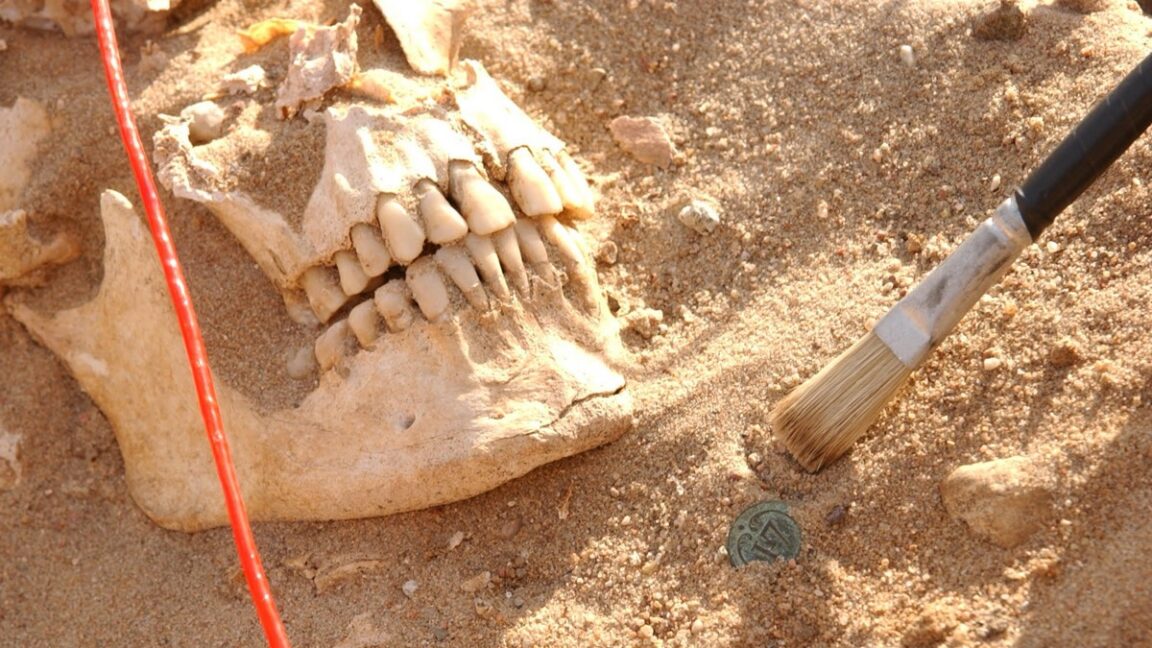Science
DNA Analysis Uncovers Pathogens Behind Napoleon’s Army Deaths

In a groundbreaking study published in the journal Current Biology, researchers have identified two pathogens that likely contributed to the high mortality rate of Napoleon Bonaparte’s army during the ill-fated 1812 campaign in Moscow. Out of approximately 615,000 soldiers, only about 110,000 returned home, with many casualties attributed to harsh conditions, starvation, and disease.
The two pathogens identified are Salmonella enterica, responsible for paratyphoid fever, and Borrelia recurrentis, which causes relapsing fever and is transmitted by body lice. The study follows a series of historical debates regarding the diseases that ravaged Napoleon’s troops, with previous accounts mentioning illnesses such as diarrhea, dysentery, and typhus.
Modern Techniques Illuminate Historical Health Crisis
Co-author Nicolás Rascovan from the Institut Pasteur expressed excitement over the application of contemporary genomic technologies to analyze remains buried for over 200 years. He emphasized that understanding the genomic data of historical pathogens can provide insights into how infectious diseases evolved and affected populations.
Historical records from the time indicate that soldiers suffered from typhus, dysentery, and other ailments after consuming contaminated food, such as salted beets. An 1812 report by one of Napoleon’s physicians, J.R.L. de Kirckhoff, specifically noted these conditions, attributing them to dietary indiscretions and resulting gastrointestinal distress.
Despite earlier studies suggesting the presence of typhus and trench fever pathogens, Rascovan and his team utilized advanced DNA analysis techniques to examine remains from a mass grave in Vilnius. Their methods allowed for more accurate identification of pathogens in degraded DNA samples.
New Findings and Their Implications
The study analyzed 13 teeth from 13 different individuals excavated from the mass grave, revealing that four teeth tested positive for both S. enterica and B. recurrentis. Notably absent were any signs of the typhus pathogen R. prowazeklii or the trench fever pathogen B. quintana, findings that contradict previous research conducted in 2006.
The authors caution that while their findings provide the first direct genetic evidence of these pathogens, the small sample size does not entirely eliminate the possibility of other diseases affecting the soldiers. They propose that a combination of factors, including fatigue, cold, and multiple diseases such as paratyphoid fever and louse-borne relapsing fever, could explain the high death toll.
Paleogeneticist Sally Wasef from Queensland University of Technology commented on the study’s implications, suggesting that the low quantities of microbial DNA recovered make the results suggestive rather than definitive. Nevertheless, she acknowledged that such research holds significant potential for clarifying the role of disease in historical population declines.
As scientists continue to explore the genetic remnants of past epidemics, this study stands as a reminder of the profound impact that infectious diseases can have on historical events. Understanding these dynamics may also provide valuable lessons in managing contemporary health crises.
-

 Science3 months ago
Science3 months agoToyoake City Proposes Daily Two-Hour Smartphone Use Limit
-

 Top Stories3 months ago
Top Stories3 months agoPedestrian Fatally Injured in Esquimalt Collision on August 14
-

 Health3 months ago
Health3 months agoB.C. Review Reveals Urgent Need for Rare-Disease Drug Reforms
-

 Technology3 months ago
Technology3 months agoDark Adventure Game “Bye Sweet Carole” Set for October Release
-

 World3 months ago
World3 months agoJimmy Lai’s Defense Challenges Charges Under National Security Law
-

 Lifestyle3 months ago
Lifestyle3 months agoVictoria’s Pop-Up Shop Shines Light on B.C.’s Wolf Cull
-

 Technology3 months ago
Technology3 months agoKonami Revives Iconic Metal Gear Solid Delta Ahead of Release
-

 Technology3 months ago
Technology3 months agoApple Expands Self-Service Repair Program to Canada
-

 Technology3 months ago
Technology3 months agoSnapmaker U1 Color 3D Printer Redefines Speed and Sustainability
-

 Technology3 months ago
Technology3 months agoAION Folding Knife: Redefining EDC Design with Premium Materials
-

 Business3 months ago
Business3 months agoGordon Murray Automotive Unveils S1 LM and Le Mans GTR at Monterey
-

 Technology3 months ago
Technology3 months agoSolve Today’s Wordle Challenge: Hints and Answer for August 19









